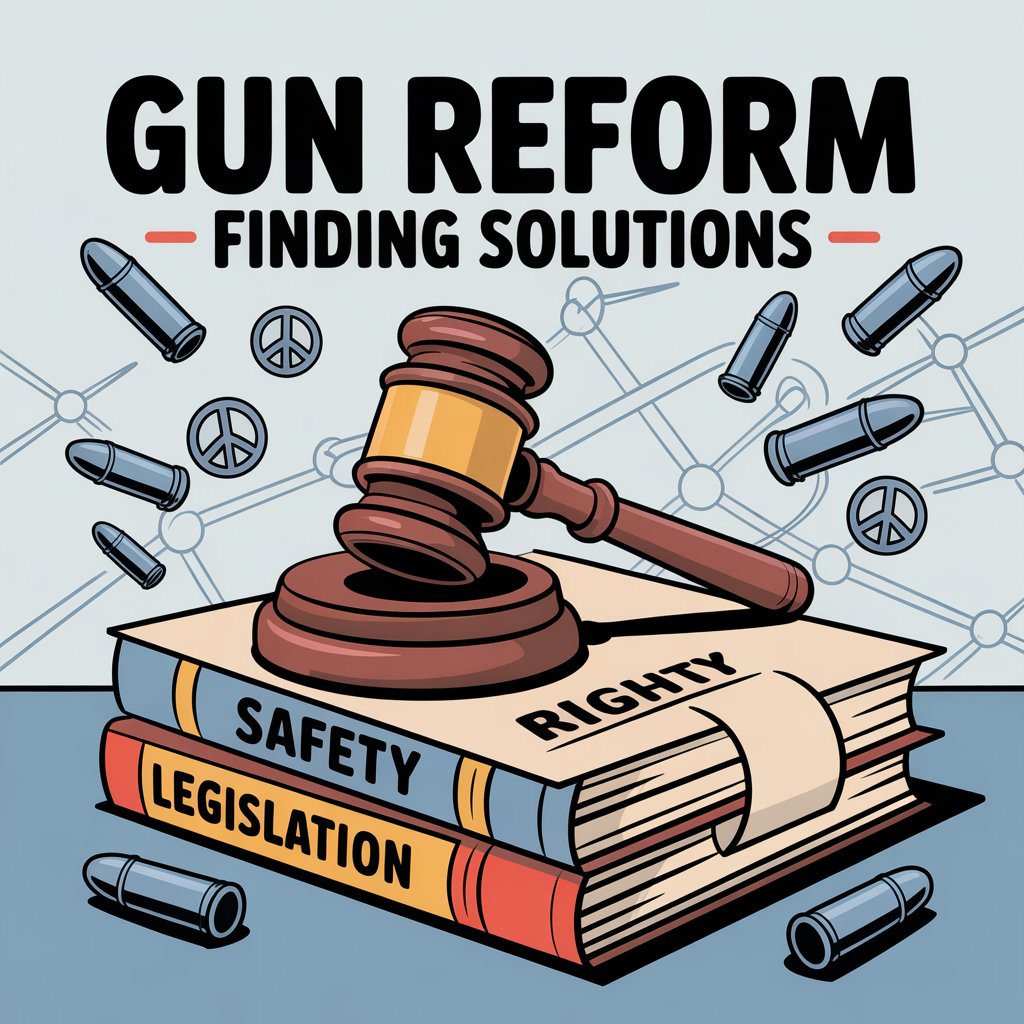In the recent wake of yet another mass shooting within the United States, there has been a wave to push forward stricter gun control reforms within Congress. Given the long history of gun control in the United States, the push for gun control reforms is nothing out of the ordinary. However, it appears this time is different as a group of high school students, who were victims of the most recent mass shooting, are refusing to be pushed aside.
The issue of mass shootings and gun control is not solely a United States problem as countries such as Britain and Australia have endured and resolved similar issues. However, the United States has faced greater obstacles in passing gun control reforms than any other country. The unique obstacles faced by the United States to pass gun control reforms are founded in the identification of the problem, the politics surrounding gun control reform, and the creation and implementation of the policy itself.
Discord Begets Inaction
The first obstacle faced by the United States that makes gun control reform considerably harder is the identification of the problem's source. The failure to agree on the problem's source is due to the framing of the issue. In the United States, problems related to gun issues is framed by many as a neglect to mental health. In this case, the solution to stopping mass shootings would be focused on promoting a greater understanding of mental health. On the other hand, the framing of the issue from a gun control perspective is centered on guns being the problem with gun control as the solution.
The lack of agreement, founded in a fundamental difference of values within the nation, leads to a massive barrier to policy. In the case of Britain and Australia, the quick establishing of the problem's source as solely guns made it easier to execute gun control reforms. After the Dunblane shooting in Britain, the Cullen report recommended restrictions on handguns to promote safety (North 2013, 190); in Australia, the Prime Minister responded to public pressure with "a plan for strict uniform gun laws" (Peters 2013, 195). In both cases, the public determined and demanded gun control as the solution.
The second component of the failure to establish the problem is founded in the history of guns within the United States. One of the key players of the distribution and promotion of guns in the United States is the National Rifle Association. Early in history, the NRA and Britain had a similar history with the main purpose of guns was sport. However, a key difference was the switch in the leadership of the NRA where the organization turned its focus on politics, supporting the civilian right to own a firearm.
Over time, the NRA would develop into a major political entity utilizing the argument of guns for self-defense. The view of self-defense with guns as reasonable is a United States perspective as shown in early British law which "permits the ownership of guns for which an appropriate reason can be demonstrated (e.g. target shooting, hunting, vermin control), but the reasons exclude self-protection" (North 2013, 186). The failure of gun control advocates to frame self-defense as an invalid reason to own guns reinforces the failure to identify, define, and agree on guns being the source of mass shootings. As a result, the United States are in a more difficult position for passing any gun control reforms compared to Australia and Britain.
Cultural Restraints on Polticians
The second obstacle specific to the United States is the political environment behind the legislation and reformation of laws. Unlike Britain and Australia, the United States government is built on a Constitution where the right to bear arms is a widely accepted individual liberty. The Second Amendment is a major player in the passing of gun control reforms, especially after the Supreme Court backed the individual right to own a gun in the landmark case District of Colombia vs Heller (2008) (Toobin 2012).
In terms of the political environment, the belief of an individual's right to own guns makes passing gun control a risk for the politician. One of the main goals of politicians is to be reelected since the "[s]uccessful pursuit of a career requires continual reelection" (Mayhew 1974, 15). Therefore, passing any legislation towards the gun control side is too big of a risk unless the politician's community strongly pushes for reform.
Goliath Opposition to Reform Policy
The last obstacle category that makes gun control reform considerably more difficult for the United States is the creation of solutions and implementation of that policy. The first barrier to the creation and implementation of policy of gun control reforms is the very organized gun rights side. In the United States, the gun control organizations are fragmented compared to the NRA which makes the NRA a very strong player in lobbying against any gun control reforms.
The strong influence of the NRA to dictate policy is evident during the week of the Senate voting to ban high capacity magazines, the "National Rifle Association mobilized members to blanket the Senate with phone calls, emails and letters. The group also spent $500,000 on Wednesday alone, on an advertising campaign criticizing "Obama's gun ban" and using Mayor Michael R. Bloomberg, a deep pocketed gun control advocate, as a foil" (Weisman 2013, 2).
Looking to the Future
The context and history of gun culture in the United States develops these specific obstacles that other countries didn't have to confront. As a result of these barriers in the problem, politics, and implementation of policy, gun control advocates should tackle the topic of gun control in a specific way. Firstly, a massive federal gun control reform is unlikely, and it will probably be undone in the next set of elections. Therefore, gun control advocates should approach gun control reform in a grass-roots coalition style.
By focusing on uniting different communities in each state to create change through incrementalism, gun advocates will have the best chance to get gun control reformations passed. The use of grass-roots style to push forward a specific policy is best shown in the Arizona immigration reforms and Washington legalization of same-sex marriage. In the Arizona situation, "immigrant and migrant justice organizations, civil rights groups and groups that represented the LGBT migrant community united in response to the passage of anti-immigrant laws" (Mayo-Adam 2018).
To counter these laws and unset the sheriff at that time, Arizona communities had to unite and organize together. Similarly, Washington LGBT, immigrant, and civil rights groups united together to start a "series of campaigns to pass pro-LGBT laws and pro-immigrant rights laws in the state" (Mayo-Adam 2018). Given the successful history of grass-roots, gun control advocates should try to unite victims of gun violence together to pass gun control reform.
There are limitations to my suggestions as by focusing on states, the actual gun control regulations can be nullified by nearby states not providing the same regulations. This is seen in the Brady bill when the proportion of gun homicides didn't change, and one possible explanation was "traffickers were able to substitute in-state sources for out-of-state sources at little extra cost" (Cook and Ludwig 2013, 25). The final limitation is that a policy window needs to open where the problem, politics, and policy line up.
References
- Alpers, Philip. "The Big Melt: How One Democracy Changed after Scrapping a Third of its Firearms" In Reducing Gun Violence in America: Informing Policy with Evidence and Analysis, edited by Daniel W. Webster and Jon S. Vernick. Baltimore: The Johns Hopkins University Press, 2013. 205-211.
- Cook, Philip J, and Jens Ludwig. "The Limited Impact of the Brady Act: Evaluations and Implications" In Reducing Gun Violence in America: Informing Policy with Evidence and Analysis, edited by Daniel W. Webster and Jon S. Vernick. Baltimore: The Johns Hopkins University Press, 2013. 21-32.
- Harding, Richard. 1988. "Everything you need to know about gun control in Australia." Briefing paper prepared for the Australian Bankers' Association.
- Mayhew, David R. 1974. "Congress: The Electoral Connection." New Haven: Yale University Press.
- Mayo-Adam, Erin. 2018. "Yes, the Parkland kids could change U.S. gun policy. Here's what it would take." The Washington Post, March 15, 2018.
- North, Michael J. "Gun Control in Great Britain after the Dunblane Shootings" In Reducing Gun Violence in America: Informing Policy with Evidence and Analysis, edited by Daniel W. Webster and Jon S. Vernick. Baltimore: The Johns Hopkins University Press, 2013. 185-193.
- Peters, Rebecca. "Rational Firearm Regulation: Evidence-based Gun Laws in Australia" In Reducing Gun Violence in America: Informing Policy with Evidence and Analysis, edited by Daniel W. Webster and Jon S. Vernick. Baltimore: The Johns Hopkins University Press, 2013. 195-204.
- Toobin, Jeffrey. 2012. "SO YOU THINK YOU KNOW THE SECOND AMENDMENT." The New Yorker, December 17, 2012.
- Weisman, Jonathan. 2013. "Senate Blocks Drive for Gun Control." The New York Times, April 17, 2013.

